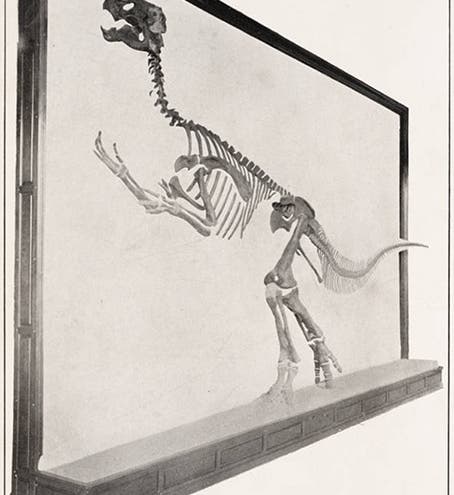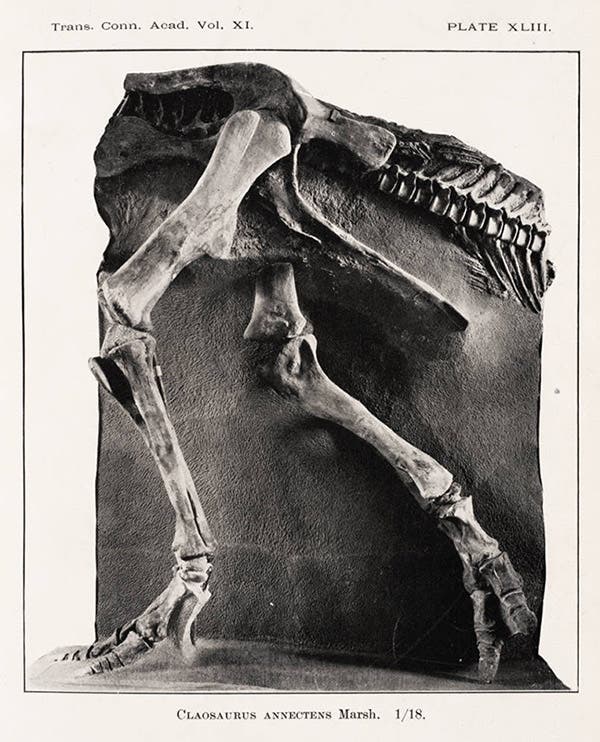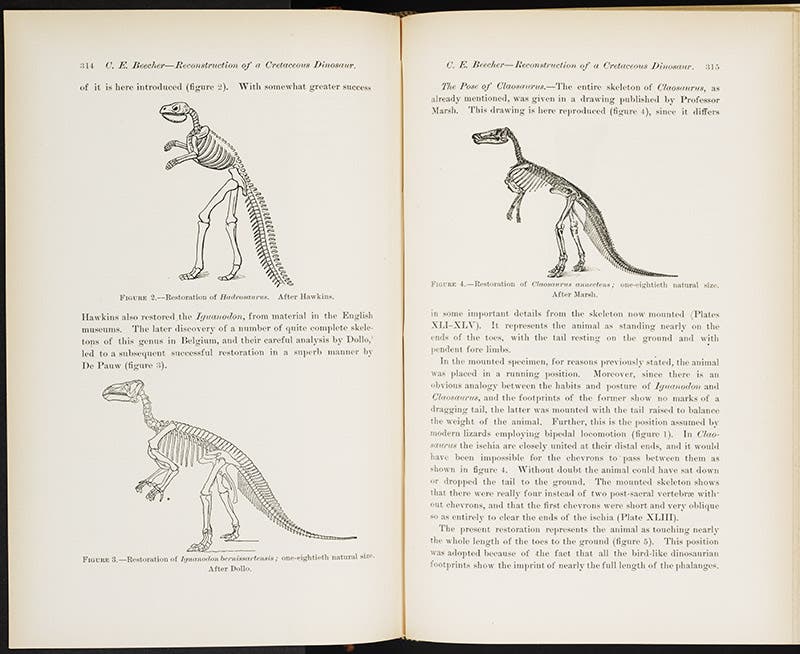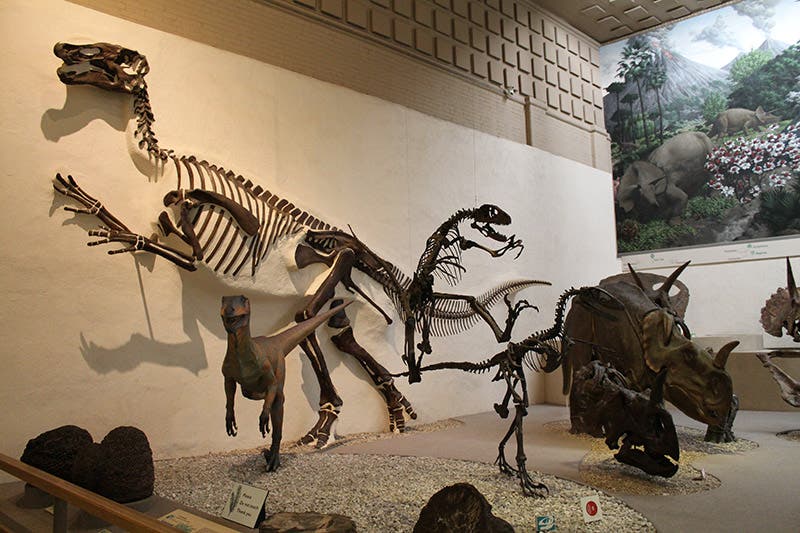Scientist of the Day - Charles Emerson Beecher
Charles Emerson Beecher, an American paleontologist, was born Oct. 9, 1856. Beecher was an expert in trilobites, and there is even a rich site named after him, Beecher’s Trilobite Bed, in upstate New York. Today we discuss his one foray into vertebrate paleontology. Beecher worked at the Peabody Museum of Natural History at Yale. In 1891, John Bell Hatcher had found a dinosaur skeleton out west. Othniel Charles Marsh, director of the Peabody Museum, had described the specimen in a paper in 1892, had named it Claosaurus annectens, and had restored it on paper (third figure in third image). But the fossilized bones remained in their stony matrix. Beecher succeeded Marsh as curator in 1899, and he decided to attempt a physical reconstruction of Claosaurus. There were at that time no mounted dinosaurs in the United States.
Because much of the skeleton was firmly embedded in the rock, and because the bones had not been scattered in death and were more or less in their natural positions, Beecher decided to attempt what is now called a panel mount. He left most of the bones in the matrix and mounted them as found, with a few, like the left leg, in front for relief. Because the right leg was more or less in a running position, the mount shows a running dinosaur. The result was not only the first dinosaur mount in the U.S., it was the first panel mount anywhere, the first to show a dinosaur in motion, and the first to have the dinosaur tail up in the air and not dragging on the ground (first image). Granted, the posture was necessitated by the positions of the bones. But Beecher defended the high tail, pointing out that no one had ever found evidence of a dragging tail in a dinosaur trackway.
The mount is still there in the Peabody Museum, on the wall right behind the more glamorous Deinonychus, discovered much later (fourth image). Claosaurus has undergone quite a few name changes in the ensuring century and is now referred to as Edmontosaurus annectens.
Beecher published his paper in the 1901-02 volume of the Transactions of the Connecticut Academy of Arts and Sciences, which is the source for the first three images above. We displayed this volume in our exhibition, Paper Dinosaurs, which you may view online.
Dr. William B. Ashworth, Jr., Consultant for the History of Science, Linda Hall Library and Associate Professor, Department of History, University of Missouri-Kansas City. Comments or corrections are welcome; please direct to ashworthw@umkc.edu.









